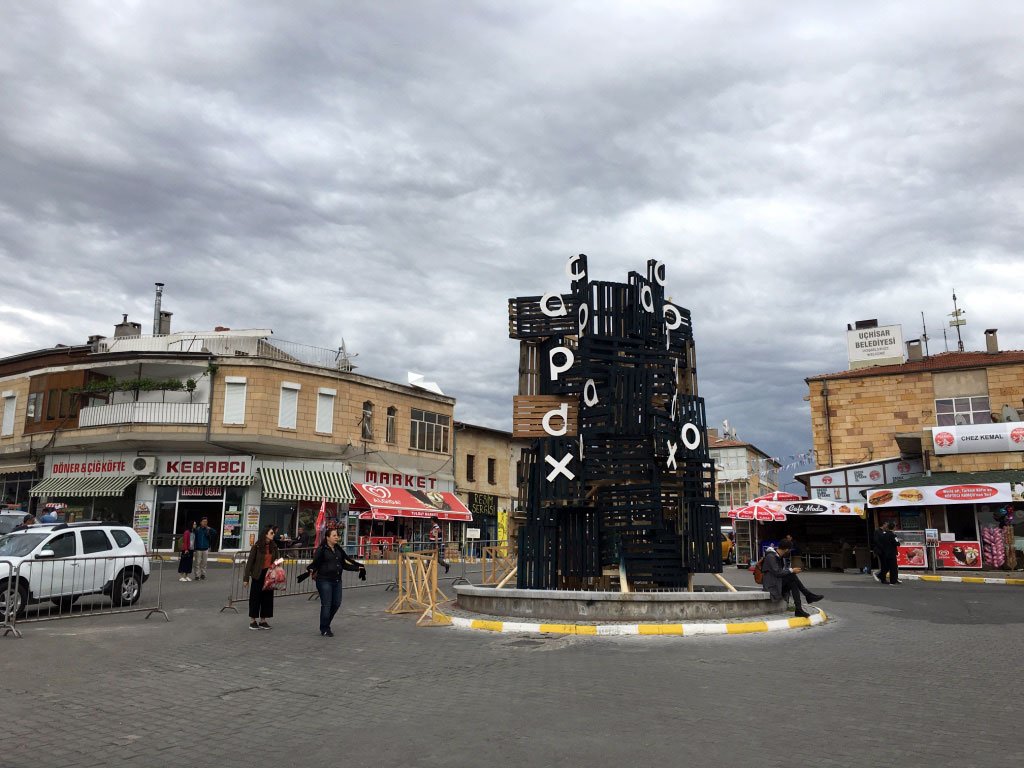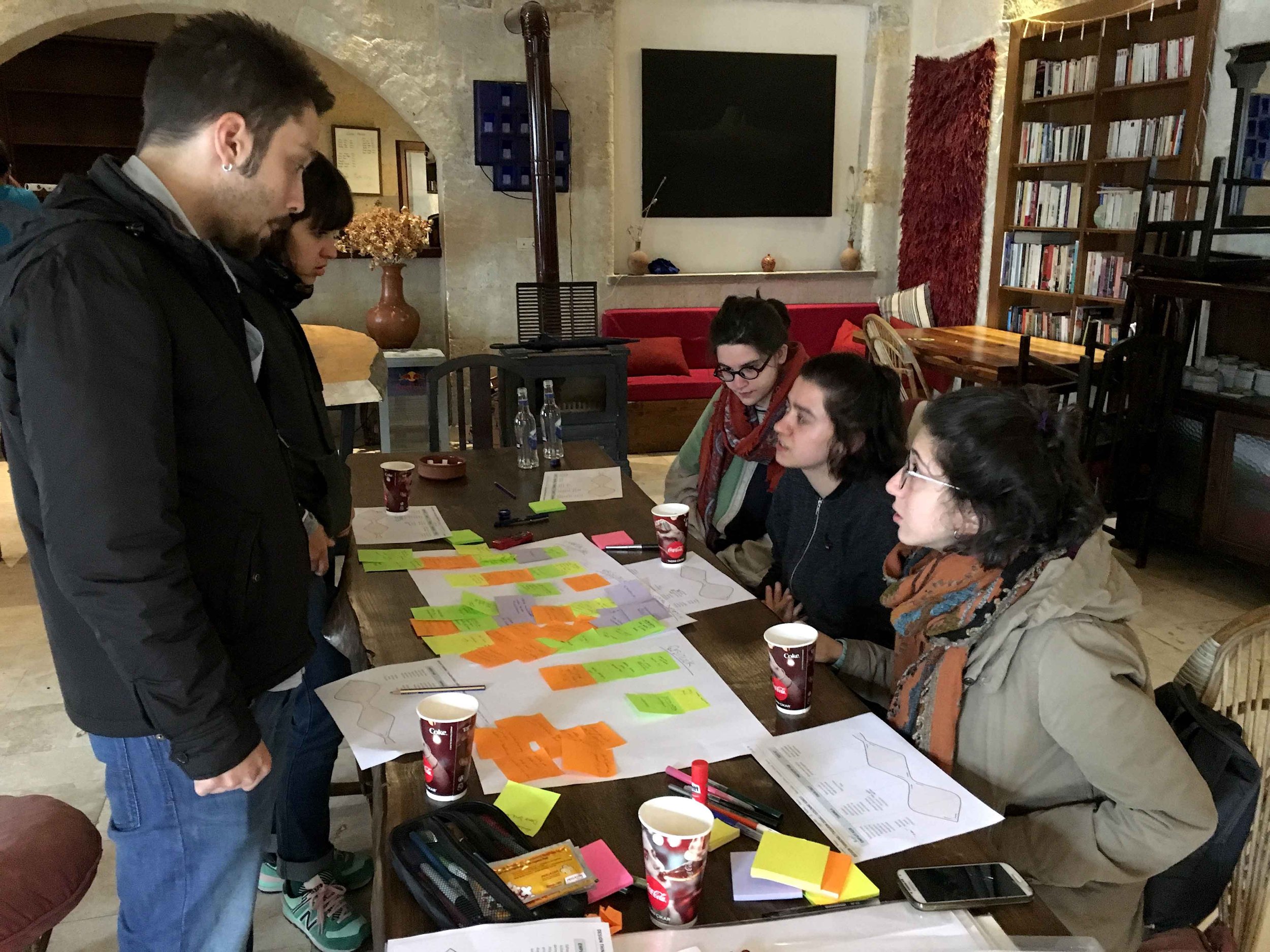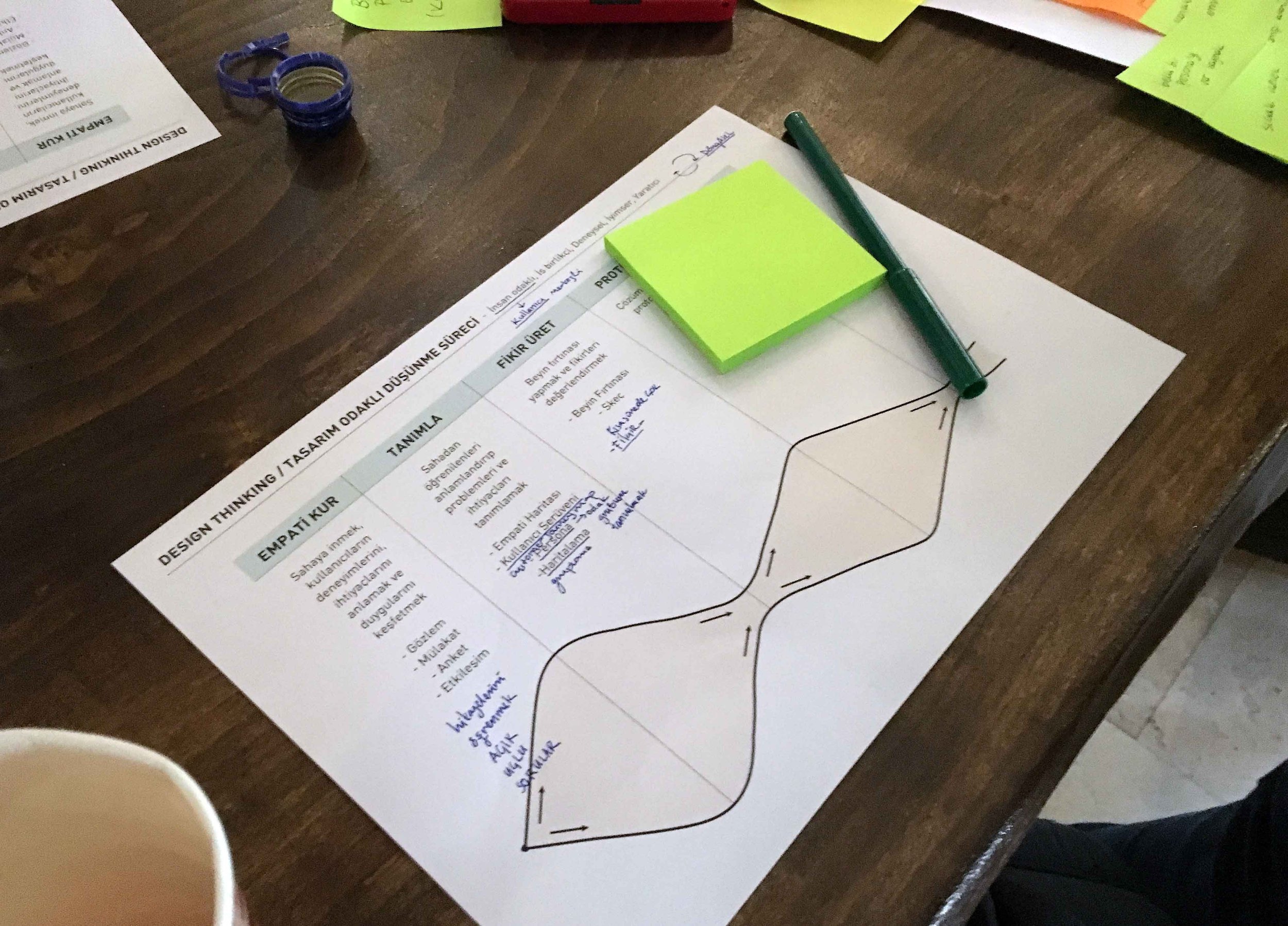How can we design events and festivals through the design thinking method? How does design thinking affect the final service in terms of experience design?
In 2017, I designed and executed a design thinking workshop around these questions. Design thinking is a way of finding people's needs and creating new solutions to them using a designer's mindset with embracing empathy, creativity, optimism, iteration and ambiguity. One of the most crucial principles of this method is gaining empathy for your target audience. Events like festivals are designed occasions. Design has a huge role in creating event experiences and event environments. Therefore, applying design thinking to the cultural sector especially in event management can help to solve problems while designing festivals, to create more experience-oriented solutions and to increase visitor engagements.
The workshop titled ‘Co-designing Cappadox 2018: Design Thinking Workshop’ aimed to design a festival through the design thinking method and to share how to generate ideas and find solutions to problems and needs with this method.
Cappadox is a multi-disciplinary cultural festival that brings a host of international and local contemporary art, music, nature, and outdoor programmes together with multiple locations across Cappadocia, Turkey. It was organised for the first time in 2015 by Pozitif, Turkey’s leading entertainment company.








In the first part of the workshop, the concept of design thinking, its principles and processes were mentioned. In the second part, the participants were designed the "Cappadox 2018" festivals by using the design thinking method which includes steps like empathize, define, ideate, prototype, and test. Participants from different disciplines have gathered for two hours. They worked as a group and come up with new ideas for Cappadox 2018. One of the most important outputs of the workshop was that the participants designed next year's festival based on their own festival experiences, enabling the organization that executed the festival to discover firsthand the needs, experiences, and comments of its target audience.








